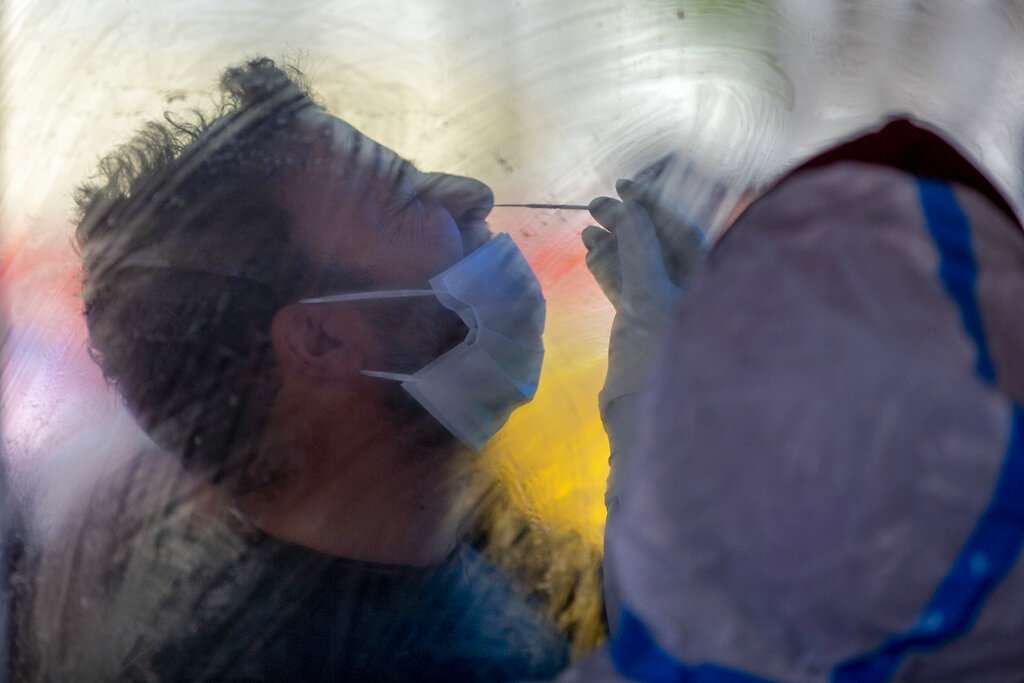After reporting up to 99 COVID-19 cases daily in April, Mumbai's slum colony of Dharavi has seen a gradual drop in single-day infections - below 5 - in the last couple of days with the tally of patients under treatment dropping to 50, marking a turnaround in the second wave.
The 'Dharavi model' of COVID-19 management and the vaccination drive have helped in successfully containing the second wave in the area, officials said.
A steady drop in coronavirus cases in Dharavi, a sprawling and congested shanty town which was once a COVID-19 hotspot, has brought huge relief to the civic authorities in Mumbai.
BMC (Brihanmumbai Municipal Corporation) officials said the slum cluster, spread across 2.5 square km and located on the border of the island city, reported three and four cases on Wednesday and Thursday, respectively, while Mumbai is still witnessing daily coronavirus cases in four digits.
They said Dharavi's active cases have come down to just 50 (6,398 of the total 6,802 COVID-19 patients have recovered, while 354 have died).
This was in sharp contrast to the adjoining Dadar and Mahim areas, which have 204 and 254 active cases, respectively.
Since the outbreak of coronavirus in April 2020, the slum-dominated area has reported 354 deaths (till May 26). Of those, 42 fatalities have been recorded since February 7, 2021, the officials said.
According to them, the daily COVID-19 cases in Dharavi started going up from mid-February, when Mumbai was hit by a second wave of the coronavirus infection.
Cases in the slum-dominated area rose significantly in March and peaked in April, when it reported the highest single-day spike of 99 cases on April 8.
The sharp rise in daily infections pushed the civic authorities to once again fall back on the "Dharavi model" which involved 4Ts - tracing, tracking, testing and treating - a strategy which was praised by the World Health Organisation (WHO) during the first wave of COVID-19.
"Despite a slow spread of the virus in December 2020 and early January 2021, we continued with comprehensive testing and tracking of cases in Dharavi," said Kiran Dighavkar, assistant municipal commissioner of G-North ward that houses Dharavi.
With the onset of the COVID-19 second wave in February 2021, the Dharavi Model was activated again to stem the spread of the infection, he said.
"Door-to-door screening of people with symptoms, aggressive testing, regular screening and testing of Dharavi residents who work in different parts of Mumbai, including deliverypersonnel, industrial workers, helped to control the spread of the pandemic," Dighavkar said.
Dharavi has a population of 6.5 lakh, which means 2,27,136 people living per sq km. Social distancing was next to impossible in Dharavi, where families of eight to 10 people live in 10x10 hutments.
Apart from congested slum pockets, Dharavi is home to several small-scale leather, pottery and textile manufacturing units.
The area has 5,000 GST-registered enterprises, 15,000 single-room factories and is a hub of international exports with an annual turnover of 1 billion USD, according to BMC data.
In Dharavi, the first COVID-19 patient was found on April 1, 2020, about 20 days after Mumbai reported its first COVID-19 case.
Thereafter, the daily COVID-19 cases rose sharply and the area was declared a 'COVID-19 hotspot'.
With a proactive screening of residents with the assistance of private doctors and community support, the local body managed to flatten the COVID-19 curve last year.
According to a BMC official, the biggest challenge was to maintain hygiene as 80 per cent the population is dependent on 450 community toilets.
Hence, the civic body focused on cleaning these toilets thrice a day to control the spread of COVID-19, he said.
Dighavkar said even though the second wave has eased, the BMC was going to continue screening and testing of people through 11 fever clinics and mobile testing units in anticipation of a third wave of the infection.
"We will not let our guards down even though the cases have dropped. We are going to continue aggressive screening and testing until Dharavi reports zero cases," Dighavkar said.
The focus will continue to be on vaccination in Dharavi where 27,000 people have been inoculated against COVID-19 so far, he added.
ALSO READ: Maharashtra COVID cases drop but deaths high, toll surpasses 92K

